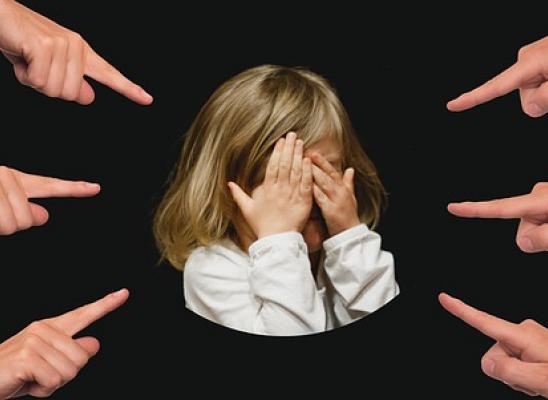A Mother-Daughter Story: What We Can Learn from Family Connections

Online test
Find out the severity of your symptoms with this free online test
Skin picking, clinically known as Excoriation Disorder, is a body-focused repetitive behavior (BFRB) characterized by repetitive picking that causes damage to the skin and can impact functioning. While it is now classified as a psychiatric disorder, that was not always the case. Prior to its inclusion in the DSM 5 in 2013, compulsive skin picking was considered to be related to other disorders including impulsive control disorders and anxiety disorders.
With its inclusion in the DSM 5 came specific criteria used to diagnose the disorder:
- Repetitive skin picking that causes lesions or damage to the skin
- Repeated attempts to decrease or stop skin picking
- The behavior causes significant distress or impairment in social, occupational, or other important areas of functioning
- Not better explained by another mental health or medical condition
The presence of these criteria would confirm a diagnosis. But is it that simple?
Like other BFRBs, skin picking is sometimes seen in multiple family members. However, what we know about skin picking is that it is highly heterogenous and that individual experiences vary widely. Even within the same family, individuals can experience skin picking in very different ways. Some people are distressed by their picking. Others seem rather unbothered by it all.
It’s been said that perception is reality. Social psychology suggests that social or cultural dynamics can contribute to people’s perceptions and experiences. Is it possible that how one views their skin picking can determine whether it’s considered problematic? When is it, or is it always, a “disorder” or can it also be more of a social phenomenon?
A new study takes a look at skin picking from this perspective. Using an ethnographic interview between mother and daughter, both living with skin picking, the study a closer look at the experience of skin picking through a broader lens of embodiment rather than simply a medical phenomenon.
Why Look Beyond “Diagnosis”?
We know that human behavior and functioning can be affected by any number of variables, some internal and some we encounter in the world. Viewing behavior and functioning from an embodied perspective means considering how the body gives rise to behavior and functioning in various social contexts and conditions. Unlike some approaches that view psychological functioning as strictly an internal process, embodiment focuses on the dynamics between body and its many experiences and influences.
The author of the study suggests that skin picking as more than just a psychiatric symptom. Rather, she views picking as a technique of the body. Body techniques are learned behaviors that reflect certain aspects of a culture. Cultural practices are embodied in physical actions and skills. From an anthropological perspective, culture teaches us people to control and manipulate their bodies, developing uniform social standards. Body techniques are both effective in passing on cultural influences and traditional. That tradition is what allows for the transmission to occur from one person.
Continuing a traditional behavior requires an element of prestigious imitation, meaning that the person being imitated holds a place of great authority and respect. The author suggests that while her picking style is different from her mother’s, there are elements of her picking that were learned or transmitted from her mother to her. In this way, skin picking is more than just a “disorder”. It holds cultural significance too.
What the Interview Revealed
In the course of the interview, a number of similarities and differences were revealed that speak to their individual experiences and to their cultural underpinnings. A few of the findings include:
- Both mother and daughter had a history of skin picking. Their picking emerged for seemingly very different reasons and in different ways.
- The daughter described her picking as emerging during her school years and identifies stress and boredom as triggers. She notes that it may also be related to her ADHD. Her picking progressed over time, and she would seek out spots on her scalp to pick. She noted certain picking rituals that were similar to her mother’s patterns. The author noted that she was seeing a mental health clinician.
- The mother’s picking emerged well into adulthood. Her picking was confined to one area on the scalp, known as a “picker’s nodule”. This nodule is the result of repetitive picking in the same place and becomes thicker over time. Mother saw a dermatologist for the nodule and subsequently had it removed. Her picking moved to another localized area of her skin. Interestingly, the mother did not view picking as problematic but rather as a “bad habit” that had little bearing on her mental health.
- The interview revealed a multigenerational component to the mother’s perception and ideas about appearance. The mother’s experience with her own mother (the interviewer’s grandmother) seemed to normalize seeing the body as a “technical object” that needed to be rid of imperfections. Picking became a “body technique” to meet that expectation. The author suggests that this dynamic highlights the influence that social context has on self-perception and meaning.
- While the grandmother did not engage in skin picking, there was an emphasis on appearance. This focus did not seem to extend to the male siblings suggesting there was a gendered quality to the expectations.
- Ideas about stigma and shame extended from mother’s ideas about appearance to her daughter’s appearance as well as to the family.
- The author notes that “Skin picking clearly means something different to Pinky (her mother) than it does to me, and this mediates how we invite and negotiate medical interventions.” Mother chose to see a dermatologist. The author suggests that this choice may be rooted in her mother’s personal body history and the familiar feeling of grooming and treating her body. The author chose psychiatry based on her own unique context, preferences, and needs.
The author suggests that from a larger perspective, skin picking is not simply a medical disorder or “fact”. Rather, it is a “polyvalent phenomenon, mediated
through different ideologies, different medical practices, and different bodies.” It can be viewed from many perspectives and meanings.
Works like this study emphasize the value of viewing skin picking through a broader lens that considers experiences, contexts, and needs in determining the best course of action for someone living with skin picking. What that means for one person is different than meaning for someone else. Skin picking is both presentation and meaning. Looking for that meaning can bring a more holistic view of someone’s experience and ways to help.
References
1. Substance Abuse and Mental Health Services Administration. Impact of the DSM-IV to DSM-5 Changes on the National Survey on Drug Use and Health [Internet]. Rockville (MD): Substance Abuse and Mental Health Services Administration (US); 2016 Jun. Table 3.28, Excoriation (Skin Picking) Disorder. Available from: https://www.ncbi.nlm.nih.gov/books/NBK519704/table/ch3.t28/
2. Jacinto, Katrina (2023) "Skin Stories and Family Feelings: The Contradictions of Skin Picking in Mother and Daughter," Crossings: Swarthmore Undergraduate Feminist Research Journal: 1 (1), 115-126. https://works.swarthmore.edu/crossings/vol1/iss1/9
3. Schubert, T. W., & Semin, G. R. (2009). Embodiment as a unifying perspective for psychology. European Journal of Social Psychology, 39(7), 1135-1141. https://onlinelibrary.wiley.com/doi/10.1002/ejsp.670
4. Mauss, Marcel. “Techniques of the Body.” Economy and Society 2, no. 1 (1976): 70–88. https://www.tandfonline.com/doi/abs/10.1080/03085147300000003
Online test
Find out the severity of your symptoms with this free online test
Start your journey with SkinPick
Take control of your life and find freedom from skin picking through professional therapy and evidence-based behavioral techniques.
Start Now



